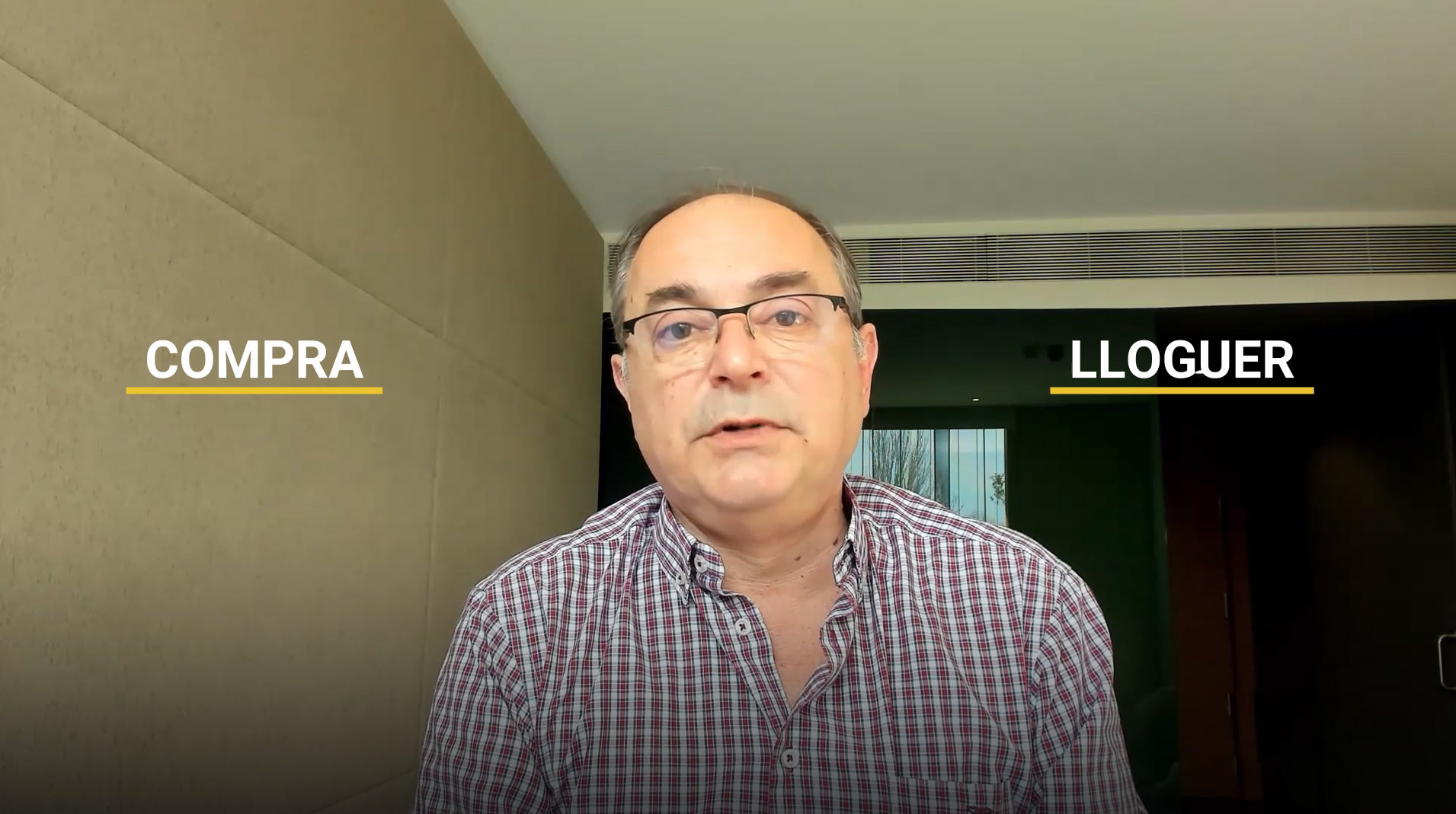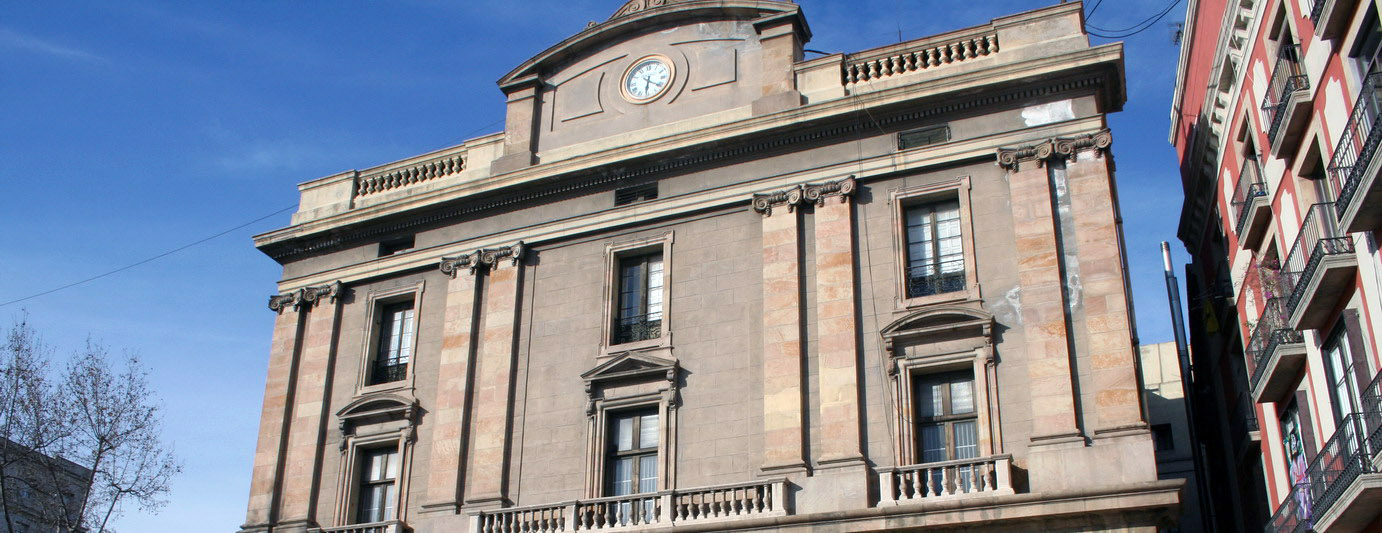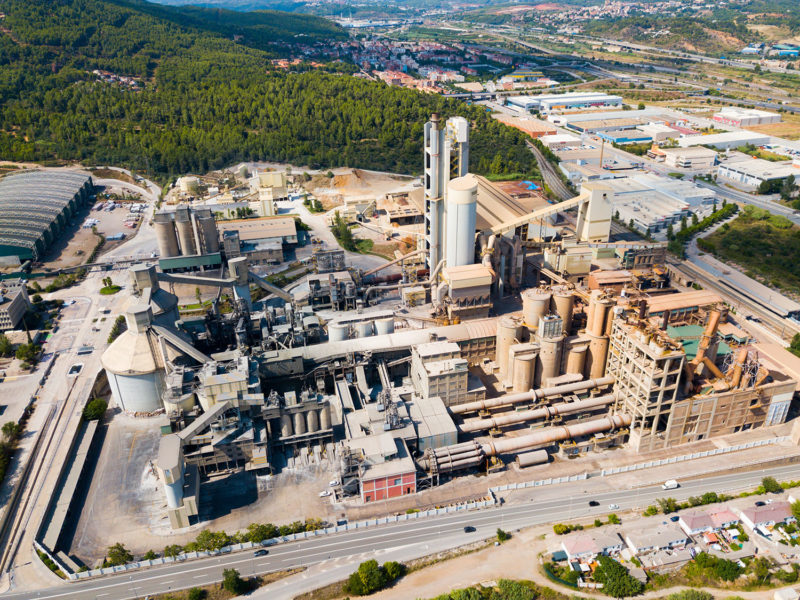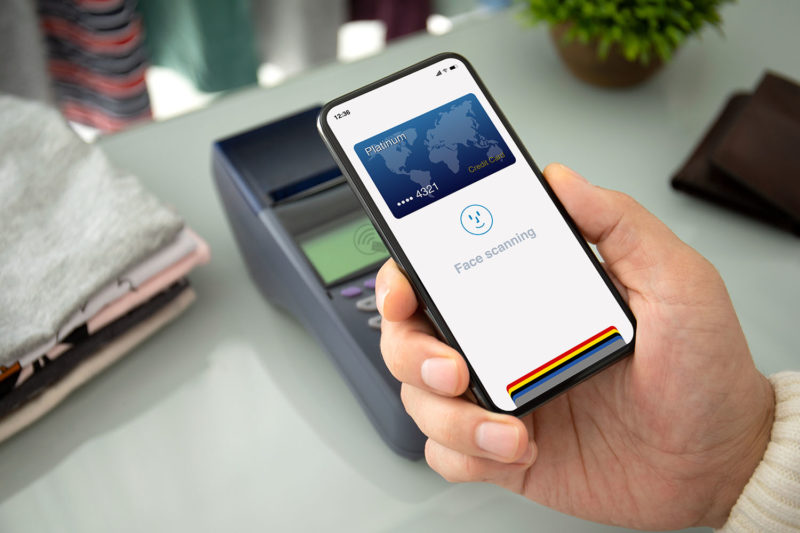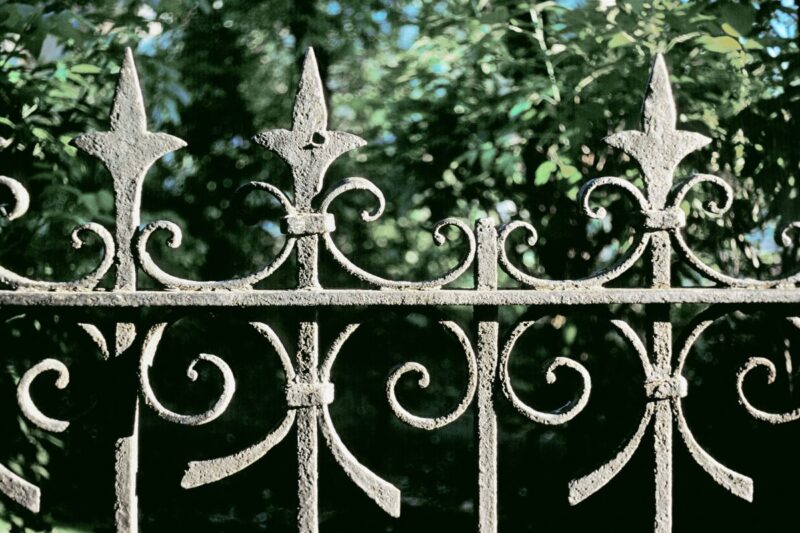What to accept and not accept when renting a house
In the real estate market, and specifically in the rental market, we can find very different situations that can lead to abuses and breaches of current regulations at all times. But does the tenant suffer all the abuse? Or can the owner also feel helpless?
Last September, the new Rental Price Containment Act came into force (11/2020 Law of September 18), with the aim of curbing the huge rise in prices that was being experienced, especially in Barcelona and the metropolitan area. This lowers and freezes the price of new rentals in areas with high demand for housing. An average reduction of 4.12% has been achieved.
With these measures, it seems that politicians are responding to the demands of platforms and unions, in favour of affordable or, at least, regulated housing. A Quick Guide has even been published to announce the scope of the new regulations.
What are the abuses?
Clearly, it was unsustainable to keep the upward pattern in rental prices, as has been happening in recent years. Tenants have basic rights that are sometimes violated, and they should report them if they find themselves in any of the following situations of abuse:
- Upon signing the rental agreement, the owner must deliver the certificate of occupancy and the energy certificate. Obtaining these documents comes at a cost, so some owners may try to rent the home without having them, even though they are mandatory. For the rental of commercial premises, only the energy certificate is required.
- Make a peaceful use of the home, without the owner being able to disturb it. Many times the so-called real estate bullying (harassment) occurs, that is, making the tenant’s life miserable and forcing them to leave, thus being able to speculate with that home. These actions are usually carried out by large holders, such as mutual funds.
- The owner must take care of the necessary repairs and maintenance. The tenant can make these repairs if they are urgent, with prior notice, and they can be deducted from the price, but sometimes these repairs are not considered necessary, and there is no refund of the cost.
- They can terminate the contract and have the deposit back, but there are owners who do not want to return it, and this money could not have been deposited in INCASÒL as required. This may mean that the rental has not been registered and, as a result, you may have more difficulty having the deposit back.
However, the right to the return of the deposit is lost if the home is left damaged, which can lead to a repair cost.
Protection of owners
However, you may find that the owner is not to blame for a conflicting relationship with the tenant. For example, it may happen that the home has not been legally rented, but someone has decided to move in without permission; that there are defaults on the agreed rent; or even that there is a misbehaviour of the tenant.
The new law does not resolve any of these situations in which an owner may be. However, as citizens, they also have the right to be given tools to resolve them. The only forecast that is made is for small tenants who may be in a vulnerable situation, who are allowed a 5% increase in rent, above the established maximums.
Owners can easily find themselves helpless as they are considered to be the strongest side in the deal. But the truth is that they can see how a tenant stops paying or damages their home, and that the solution to the problem always has to end up in court, which means a high cost of time and money.
The point is that this problem affects investment funds and small holders alike. With the new regulations, it seems that this situation is beginning to reverse, as they take into account the diversity of owners that exist, and make the distribution of responsibilities in this madness that is the real estate market a little more equitable.
If you want to know more about superior options to make your money profitable, go to Guaranteed Funds. From 11Onze Recomana we propose you the best options in the market.
Últimament, es parla molt de les start-ups i de les possibilitats de futur que generen. Aquestes estan envoltades d’idees creatives, innovadores i amb un fort component tecnològic fent que siguin les grans competidores de les empreses tradicionals. Ara bé, també requereixen certes directrius per tal que puguin arribar a tenir un lloc al mercat.
Els sistemes de control són totalment necessaris per poder tenir certa informació de l’empresa, de com s’estan utilitzant els recursos i de com s’estan assolint els objectius. Sense una mínima informació que diagnostiqui com està anant el negoci, difícilment es podran prendre decisions. Assignar responsabilitats i fer un petit organigrama d’aquestes és bàsic. Normalment, això tothom ho veu clar, i els socis, que acostumen a ser els primers promotors de la idea, de manera informal ja es distribueixen les responsabilitats segons els seus perfils i preferències. Aquest fet és clau, i normalment es fa de manera informal.
Passat un cert temps, això fins i tot pot requerir una certa formalització per evitar problemes amb les persones que es puguin anar incorporant. Però més enllà de tenir aquesta mínima formalització dels rols, funcions i responsabilitats, moltes empreses que comencen no es plantegen formalitzar massa el control de gestió. Si a més aquestes empreses es plantegen anar creixent de manera més orgànica i progressiva, moltes vegades no existeix un control formal fins que comencen a venir determinats problemes. Aleshores es comença a veure la necessitat de formalitzar el seguiment d’objectius, fer un pressupost o pla i fer-ne el seguiment i ulteriors ajustos. El què passa és que aleshores, aquest creixement que ha portat a la necessitat de formalització porta a una formalització excessiva, perquè es dona la responsabilitat de tot el que no va bé a la falta de control formal.
Suposa el control una pèrdua de l’ADN de l’start-up?
Cal en aquests casos ser curosos, i anar incorporant els controls formals i revisant els informals a la vegada. Només cal afegir l’estrictament necessari, donat que el control informal ha anat creant una cultura organitzativa i una organització informal que no es poden menystenir i que cal només variar quan creï problemes. Tot allò que les persones fan més enllà del control i que ha portat també a l’èxit, cal continuar-ho fent. Els canvis bruscs no es trobarien justificats quan una part del sentiment de pertinença a l’organització és el que ha ajudat a fer-la funcionar tot i tenir mancances en els controls formals.
Les start-ups es plantegen creixements molt elevats. Des dels inicis aquests creixements s’han de finançar moltes vegades amb recursos externs, i precisament són aquests inversors qui demanaran com està anant la seva inversió i si dona els resultats esperats. Per tant, aquestes start-up, des dels seus començaments ja incorporen professionals experts en la recerca de finançament i també en el control de com estan anant les inversions. Això porta al fet que calgui formalitzar aquest seguiment amb determinats documents, que mostrin a persones externes a l’empresa, com progressa i si es van complint els objectius. Si en aquest moment la start-up entén la importància d’un cert control formal, és probable que les probabilitats de funcionar correctament siguin molt superiors. És un bon moment per aprofitar i fer un pressupost, un seguiment, complementar el control informal existent amb un cert control formal, o fins i tot incorporar algun gestor extern expert.
És molt important ser conscient que les empreses tenen més garanties d’èxit, i encara més en empreses com les start-ups amb creixement ambiciós, si incorporen certs controls formals des del començament. Això sí, tenint en compte tres aspectes molt importants:
- El control formal ha de ser el mínim necessari i mai ha d’anar en contra dels controls informals o la manera de ser dels emprenedors.
- El control formal sempre ha de donar valor afegit a la gestió, perquè un mal control formal sempre és pitjor que no tenir control.
- Ser conscient que a mesura que l’empresa vagi creixent, la tendència a resoldre els problemes incrementant la formalització és elevada.
En realitat els problemes importants se solucionen mirant als sistemes de control informals. De fet, l’infern és aquell lloc ple de lleis que mai es poden complir, i hem d’evitar convertir la nostra empresa en un infern per les persones que hi treballen.
11Onze és la fintech comunitària de Catalunya. Obre un compte descarregant l’app El Canut per Android o iOS. Uneix-te a la revolució!
Si t'ha agradat aquest article, et recomanem:
 Economy
EconomyEmpreses ètiques, una necessitat del Segle XXI
4 min readQuan un parla de justícia a les empreses, ben aviat surt el...
The first modern banking society in Catalonia was founded in 1844. It was the Banc de Barcelona, which initially focused on financing businesses.
This bank stood out for being the first bank in the state to issue banknotes, as journalist Sergi Hernández explained on the betevé website. The journalist also emphasises the fact that the bank did not just focus on circulating banknotes throughout the state, given that at that time banknote issuance was delocalised, but was also the first to help trade and industry.
The bank’s first banknotes were entirely handmade. To prevent them from being counterfeited, they were made with many cylinder mold watermarks and were clipped into a checkbook. Drawings were also an important security point for their difficult reproduction, making them less likely to be counterfeited. Hernández also reminds us that there were two female figures on some banknotes of this period: one female figure represented Spain, and the other represented Barcelona, as a symbol of the bank’s mothers.
On the banknotes, one female figure represented Spain, and the other Barcelona, as a symbol of the bank’s mothers.
The journalist reminds us that the Banc de Barcelona, in its early days, ran smoothly until it suffered its first crises. Specifically, in 1874 it stopped issuing banknotes for the provincial banks, which meant that it ceased to operate as a commercial bank. Subsequently, under the effects of the crisis in Spain after the First World War, the Banco de Barcelona went bankrupt in 1920.
And the same year that it went bankrupt, the Banc de Catalunya was born in Reus. This bank holding company was created by the local financiers Fransesc and Eduard Recasens, and Evarist Fàbregas, as Marc Pons writes in El Nacional. These three people, owners of different banks in our country, took the remains of the Banco de Barcelona and added them to their new bank, called Banc de Catalunya. Pons also reminds us that the bank began to grow and open branches around Catalonia and even in the Valencian Country, and in 1930 it went international with the opening of a branch in Paris. But the history of this new bank was short. As the journalist Marc Pons wrote in his article in El Nacional, on 2 July 1931, Minister Prieto ordered the withdrawal of the balances held by Campsa and Cepsa in the Banc de Catalunya, which represented more than 50% of the bank’s deposits. Individuals and businesses also withdrew their deposits, and this led to the collapse of the Banc de Catalunya a few days later. And with the bankruptcy and the Bank of Spain refusing to finance the Banc de Catalunya, it became impossible to meet the obligations arising from the activity of Campsa and Cepsa. Thus, in 1931 it had to close its doors.
With the Banc of Catalunya bankrupt, and the Bank of Spain refusing to finance the Banco de Cataluña, the Banco de Cataluña finally went bankrupt in 1931.
Today, in the Catalan Countries, two building societies still operate, those known as Caixa d’Ontinyent and Caixa d’Estalvis de Pollença. There are also different credit cooperatives, such as the Caixa d’Enginyers and Caixa de Guissona. In addition, we have a dozen banks, an electronic money institution, different securities brokers, management companies of collective investment institutions and cooperative societies with financial services according to the data of the list of financial entities of the Catalan countries.
But we are at a time of change in society, the pandemic has accelerated what was already happening more gradually, which is the need to reinvent the way we live, to be more ethical and more sustainable. This has created the need for a bank of the future, a bank that adapts to all generations, with a clear response, that is transparent and where its clients are treated as people, attending to their real needs with transparency and in a simple way. We are leaving traditional banking behind. Without detracting from a history of banks and building societies that have influenced and left their mark on the Catalan economy, it is now time to reinvent ourselves, to roll up our sleeves and “good sickle blow” as we Catalans say, cultivate the land to give birth to the new banking system that the country needs.
11Onze is the community fintech of Catalonia. Open an account by downloading the super app El Canut for Android or iOS and join the revolution!
If you liked this article, we recommend you read:
Brussels wants to secure the EU’s sovereignty by improving the autonomy, competitiveness, and resilience of its industrial sector to reduce its dependence on other global players
The EU’s industrial sector still accounts for more than 20 per cent of its economy, generates some 35 million jobs and is equivalent to 80 per cent of exported goods. Yet, it is in danger of lagging behind the world’s two major powers, China, and the United States, which are promoting massive reindustrialisation processes.
The disruption of the raw materials and semiconductor supply value chains caused by the pandemic and the sanctions on Russia highlighted the need to reflect on how to promote reindustrialisation policies that guarantee the strategic autonomy of the 27 member states.
It was evident that the structural base in key sectors, such as dual-use high technology, energy supply, raw materials, rare earth and the defence industry, had to be strengthened while favouring the energy transition towards a new economic model less dependent on hydrocarbons.
Financing technological sovereignty and energy transition
In this context, the EU’s Next Generation funds were launched, a programme agreed as an economic response to the COVID-19 pandemic and endowed with 800 billion euros to finance the digital and ecological transitions.
However, much of the allocation of this funding has been hampered by bureaucracy. By December 2023, only around 30% of available grants and loans had been disbursed, according to EU figures. This disastrous management of the programme’s aid is making it difficult to transform the economic model that was intended to be changed.
Also in December, EU ministers agreed to increase the production of green technologies through the Zero Emissions Industry Regulation. The aim is to cover 40% of the EU’s needs in strategic technology products, such as solar photovoltaic panels or wind turbines, to be able to compete with China.
Likewise, the “Chips for Europe” initiative was launched to boost the continent’s technological sovereignty, ensuring that Europe meets its digital decade target of doubling its share of the global semiconductor market to 20%. A project that has been reinforced by state initiatives such as Spain’s PERTE or Germany’s subsidies of more than 22 billion euros to semiconductor manufacturers to set up production plants in its territory.
Sovereignty means acting as a sovereign entity
One point that European institutions cannot ignore is that ensuring industrial sovereignty must not only be based on the use of subsidies but also a change of mindset in the geopolitical sphere. Europe needs to impose its own foreign policy rather than acting as an entity subservient to US economic interests.
The economic sanctions imposed by the US on Russia, Iran and China in recent decades, but especially on Russia in the wake of the war in Ukraine, call into question the ‘cui bono’ behind the economic interests of the actors involved in these conflicts. These economic sanctions have greatly benefited the US and have had devastating consequences for the economies of EU member states.
The growing tensions between the United States and China are the prelude to a repetition of the geopolitical tug-of-war seen with Russia, which has led to war in Europe and has greatly damaged the European industrial sector. The European Union economic bloc has enough bargaining power to look after the interests of its industrial sector vis-à-vis the major global players, but this means facing up to an inescapable fact: the European Union will either act as a sovereign entity or it will cease to be.
11Onze is the community fintech of Catalonia. Open an account by downloading the super app El Canut for Android or iOS and join the revolution!
Throughout our education we have learnt great people that have marked history by their findings or research. The vast majority of them are the names of men who have achieved success. What the books do not tell you is that many of these men have worked together with women, without whom their achievements would not have been possible.
In all sectors of work we find women who have been made invisible simply because they are women. In many cases, their work has even been attributed to the figure of a man who has received all the recognition, and the world of economics is no exception. We want to shine a light on these women who have been left in the shadows and vindicate their contribution to history.
Beatrice Webb, revolutionary ideas
From an early age, Beatrice had many intellectual interests and was very interested in socialist ideas as a result of the revolutionary ideas that were current at the time. She was born in 1858 in Gloucester, England, a time when the working class of the Industrial Revolution suffered indiscriminate exploitation by the bosses and families lived in misery. Driven by this context and her delicate health, Beatrice undertook a practically self-taught education with a strong focus on philosophy, science and literature.
In 1890 she met the socialist intellectual Sidney Webb, who later became her husband. Together they began to work on new theories by holding meetings with other socialist sympathisers where they would argue for hours on different subjects. In 1897 they published what was to be the most important work of their lives and a key instrument for understanding the non-Marxist socialist revolution in England, “Industrial Democracy”.
They are credited with the idea of a state guaranteeing a decent life for its citizens, a term she herself called the house-keeping state. Although they formed a perfect tandem and worked together on different publications, only the name of her husband, Sydney Webb, went down in history as one of the most important social reformers in England.
Anna Schwartz, essential to monetarist theory
If we mention the name Friedman, it is likely that we have heard of him or even recognise him as the father of monetarist theory. And he certainly contributed to the creation of his reputation, but he was helped by Anna Schwartz, a researcher who remained in the shadow of Friedman’s prestige.
Born in New York in 1915, she spent much of her life working at the National Bureau of Economic Research in her native city. In 1963, however, her career took a leap forward with the publication of “A Monetary History of the United States, 1867 to 1960’, a work that came to light thanks to the joint research of Schwartz and Milton Friedman. The work marked the history of the US economy and is still today a benchmark for good economic management and how to avoid fluctuations at the national level.
Friedman was named as the founding father of monetarist theory, relegating Schwartz to second place. In 1976 she received the Nobel Prize in Economics for her work with Schwartz, but she received no mention in the committee or in the public sphere. Years later, British critics highlighted Schwartz’s research, claiming its importance in the development of the theory, but she did not receive recognition.
They are just two examples of women who have contributed to history but who, because they are women, have been relegated to the background, to the shadows. Now, with more resources than before and a more critical eye, we can dust off those figures who, despite having made their contribution, have been excluded from the history books.
11Onze is becoming a phenomenon as the first Fintech community in Catalonia. Now, it releases the first version of El Canut, the super app of 11Onze, for Android and Apple. El Canut, the first universal account can be opened in Catalan territory.
No matter, what corruption case is now occupying the public debate, the important thing is that it never goes away. What role does corruption play in the functioning of modern states? How can we combat it?
Corruption outrages us because it devours public resources that come directly from citizens’ taxes. But no matter how angry we are, no matter how much the laws persecute it, there is always a new case of corruption. A 2018 study by the European Green Party estimated that corruption causes economic damage worth 904 billion euros in the European Union. To put it in context: it is money that almost triples the defence effort of the entire EU.
In the Arte documentary, “Corruption, a necessary evil?” They wonder why corruption never goes away. Is it possible that it is a necessary lubricant to correct the inefficiency of the public sector? Historian Jens Ivo Engels argues that without clienteles it would not have been possible to create modern states, because it fostered loyalty between patron and supplier. With the French Revolution and the creation of the civil service in modern states, around 1800, corruption should have disappeared. There were already public workers whose salaries should not, therefore, be tempted by corrupt practices. But it was not like that. Because?
Corruption, against slavery
Surprisingly, corruption ended slavery in the United States. The mythical Abraham Lincoln did not have a majority in the House of Representatives, so he bribed some political rivals to vote in favour. Could we think, then, that a certain degree of corruption is necessary? Of course not. An IMF study already warned in 2002 that the more corrupt a society is, the worse things are for its citizens. Fewer children are born, there are more dropouts from studies, public services are worse… What’s more, according to research from the universities of Newcastle and Copenhagen, the level of corruption has a direct impact on the mental health of citizens.
How to defend yourself against corruption
The question is simple: how can society combat corruption? If you don’t know where it comes from, how is it produced, and doesn’t anyone want to be called corrupt? How do you combat an evil so normalized that it is often not even seen? To measure corruption, there is the Corruption Perception Index. Spain is currently rated as the thirty-fifth least corrupt economy, tied with Botswana, Cape Verde. The path to a country clean of corruption is marked by Estonia, with great involvement of citizens.
If you want to learn more about the history of corruption, how it works and how it can be fought, you can watch “Corruption, a necessary evil?” in Arte channel.
Did you know that the first person to predict the appearance of credit cards was the writer Edward Bellamy in 1888? We have talked about the history of the credit card on several occasions at La Plaça. Now, we are going to review it again with our agent 11Onze Jennifer Roca.
The first credit card was created in 1914 by the Western Union company for its most select clients with the idea of offering them credit without surcharge. But it was Frank McNamara, in 1949 in New York, who had the idea of a universal card with two other friends, when he realised that he had left his money at home and his wife had to carry his wallet to pay for dinner. Do you want to know all the details of the story? Watch the video!
Economist Teodor de Mas has talked about his book ‘Hacer dinero’ in La Plaça de 11Onze, from the program Territori 17 of Radio Cardedeu. He shares his family’s method to save, with the aim of “trying to be happy and have time”.
That there is no freedom without financial freedom is increasingly evident, but achieving that financial freedom is really complicated in a society that pushes us to spend the money we have. Teodor de Mas is an economist and has compiled in the book ‘Making Money‘ the financial knowledge he has learned through generations and generations of his Jewish-Catalan family. The book has become one of the literary phenomena of the moment and, to talk about it, he visited La Plaça d’11Onze in the program Territori 17 of Radio Cardedeu.
Money and time
“The measuring rod is time and not money. Money is something we humans have invented to buy time. The only use money has is to buy time”, explains Teodor de Mas, who assures that we need to have more intuition to understand what money is. According to him: “money is a language, a tool that we should all used to try to be happy and have time”.
Saving is the key to achieving a certain financial freedom, but it is very difficult: “We live in a consumer society, not a savings society. Everything leads us to consume what we have, what we earn,” says De Mas. That’s why, to be able to save, you have to get serious: “To save, you have to be serious, define a family or personal budget, decide what part you will save and stick to it. Then, at the end of the month, we have to take out the money we have saved and put it in another account where we can’t spend it to make sure we save it“, explains the author of ‘Making Money’.
Catalans and business
We Catalans have a reputation as savers and entrepreneurs, but where does this idea come from? According to Teodor de Mas, we are lucky not to start from nothing: “Catalans tend to be entrepreneurial because there is a lot of accumulated capital. This is a rich, dense and powerful territory. We don’t start from zero, we start from what has been done for generations”. However, De Mas advises Catalans to change their perspective on savings, because he assures that Catalans are too conservative and take few risks.
You can listen to the rest of the conversation with Teodor de Mas in the La Plaza section of Radio Cardedeu’s Territory 17.
If you want to discover the best option to protect your savings, enter Preciosos 11Onze. We will help you to buy at the best price, the refuge value par excellence: physical gold.
In the same way that we take out loans and other financing mechanisms when the money we earn is not enough to cover our household expenses, it is common for a State to borrow money when its income is insufficient to meet its budgetary needs. We explain where this financing comes from and the consequences of high public debt.
Public debt or sovereign debt is the total money owed by all the public administrations of a State to private investors or other countries, while the negative balance that gives rise to the need for financing is known as the public deficit. It is a form of financing that allows a country to raise immediate revenue when tax revenues are not sufficient to cover its budgetary needs and to repay it gradually over time.
Although the figures may be surprising, sovereign debt in itself is neither good nor bad. Countries can require financing for public investment to stimulate economic growth, without suffering the consequences of raising taxes or issuing more of their own currency.
That said, borrowing to make an investment that will generate value for the economy is not the same as borrowing to cover uncontrolled spending. Likewise, there are countries that are able to afford high levels of debt because the financial markets have confidence in their ability to pay, thanks to the stability of their economies or their national currency.
Financing through public debt securities
Depending on the financing needs of each country, there are different models for issuing public debt securities. The repayment term of the loan, short, medium or long term, and the various ways of earning interest determine the main differences.
Treasury bills have the shortest repayment term of 3, 6, 12 and up to 18 months and therefore offer a lower interest rate than Government Bonds, with a term of between two and five years, which also distribute coupons to investors, which are collected on a regular basis.
Finally, governments can issue long-dated Government Bonds with maturities of up to 30 years, designed for long-term investors seeking a higher interest return. Precisely because these are assets with such a long maturity period where the interest rate does not depend so much on the monetary policy of the country’s central bank, but on structural factors of the economy, they are a good barometer of the degree of investor confidence in the future economic stability of a state.
Budget imbalances and runaway public indebtedness
Expansionary public investment policies in the wake of the economic stagnation caused by the health crisis have pushed the sovereign debt of many countries to historic highs. Economists and international organisations are concerned about the high level of global public debt, which may end up being unsustainable for developing economies.
In other words, debt is a necessary instrument for growth, as long as it is sustainable, but the reality is that public debt figures in the world have risen considerably in recent years, approaching those of global GDP, and are therefore far from this sustainability. Spain’s public debt continues to set historical records, the latest being last August when it reached a figure of 1.49 trillion euros after rising by 4.44 billion.
Data published by the Bank of Spain on Friday 21 October in its latest economic report showed that in the last 12 months the debt has increased by a further 72,029 million euros. Eurostat also said that eurozone debt in the second quarter also reached a record high of 12.1 trillion euros. How do you pay for all this?
Some analysts say that public debt is never really paid off, i.e. it is never reduced in absolute terms because it is always being rolled over. Even when a state goes bankrupt, as happened with Greece in 2008, the conditions are renegotiated and new debt is issued. In practice, however, we are all paying for it, unequally. As happened in Greece, those who have the least pay the most, those who keep cash in their pockets or current accounts, see their money lose more and more of its value.
If you want to discover the best option to protect your savings, enter Preciosos 11Onze. We will help you buy at the best price the safe-haven asset par excellence: physical gold.
D’ençà que l’ésser humà va deixar el nomadisme per constituir-se en societats sedentàries, l’aparició de l’estratificació social, basada en l’acumulació de riquesa, va esdevenir un fet. Des de llavors s’han alternat períodes de bonança i de crisis. En aquesta primera part, repassem la història de les grans crisis dels segles XVII, XVIII i XIX.
En el naixement del capitalisme incipient, les crisis van sorgir sobretot per l’expansió dels mercats, els grans monopolis comercials, el consum de productes de moda i les males collites provocades per canvis mediambientals. Des de la crisi de les tulipes, fins a les companyies del mar del sud, passant per les guerres napoleòniques, els problemes del deute, de la depreciació, de la inflació i la consegüent caiguda de règims polítics emergien com ho fan avui dia. Com s’ho van fer aleshores? Com aquestes crisis van fer caure l’antic règim? Les respostes que van trobar ens poden ajudar a comprendre el nostre aquí i ara.
1637: Per què les tulipes costen tant?
Amb la Unió d’Utrecht, les 17 Províncies Unides es van conjurar per treballar plegades per deslligar-se de l’ocupació de la Corona de Castella. Aquesta lluita comuna els va permetre viure una pujança econòmica i comercial que les va dur a un dels períodes més daurats de la seva història. El procés de creixement econòmic va fer eclosió a principis del segle XVII, quan ja constituïdes com a República Holandesa, van esdevenir la primera potència econòmica mundial. Era possible compaginar l’ètica protestant i l’esperit del capitalisme sorgit dels monopolis comercials de les mars del Japó?
Sí, i el pintor neerlandès Frans Hals ho va retratar. L’artista, considerat el gran retratista flamenc del segle XVII, va pintar per a la posteritat infinitat de retrats per a les classes acomodades holandeses, que tenien molt d’interès a deixar constància de la seva bona fortuna. Un clar exemple és el seu conegut quadre ‘Retrat d’una parella’, que mostra a un matrimoni agafant-se de la mà, símbol de lleialtat.
En aquest context d’exuberància econòmica, fou quan les tulipes van adquirir una rellevància incomprensible, atès que van convertir-se en l’expressió de major ostentació econòmica que es podia mostrar en públic. Perquè ens fem una idea, durant la dècada dels anys 20, només un bulb de tulipa es podia vendre fàcilment per 1.000 florins, mentre que el sou mitjà anual d’un holandès era de 150 florins. És a dir: un neerlandès mitjà havia de treballar durant quasi deu anys per adquirir un bulb de tulipa exòtic.
Aquest exotisme desmesurat va desembocar en una bogeria per la compra de tulipes a futur que duraria anys, fins a arribar a provocar una crisi financera descomunal i la fallida total del sistema econòmic holandès a partir del 6 de febrer de 1637. Aquesta bombolla de les tulipes que va petar potser ens recorda a la bombolla immobiliària del 2008 i les maleïdes hipoteques ‘subprime’.
1720: Qui té un amic, té un tresor
Si t’ofereixen l’oportunitat d’invertir en una empresa i t’asseguren que et reportarà moltíssims beneficis, segurament t’ho pensaràs. Després, et faràs la següent pregunta: aquesta empresa exactament què produeix per generar tants beneficis? A l’Anglaterra de principis del segle XVIII, molts inversors —petits, grans i molt grans— aquesta pregunta la van obviar. De fet, ni tan sols se la van plantejar.
L’afany per conquerir nous mercats per tal d’incrementar les balances comercials de les principals monarquies europees —castellana, francesa i anglesa— va provocar importants conflictes bèl·lics continentals. I, tots ells, comportaven uns elevadíssims costos econòmics per als eraris públics. Per això, es van veure obligades a cercar el control de nous territoris d’ultramar, principalment de les Amèriques; i el domini del món, en general.
L’emissió de deute era una de les fórmules emprades pels Estats per finançar les seves polítiques expansionistes. A l’Anglaterra del 1719, la Companyia dels Mars del Sud era una de les moltes empreses que compraven part del deute. A la vegada, l’empresa emetia accions per finançar-se i amb aquests diners tornava a comprar deute. Tanmateix, a diferència de la resta de competidors, la Companyia dels Mars del Sud va aconseguir un acord crucial d’exclusivitat en esdevenir l’única companyia anglesa amb potestat per comerciar directament amb les colònies sud-americanes de la Corona Castellana.
Aquest acord va provocar que els mercats financers es veiessin desbordats per una gran eufòria compradora d’accions de la companyia. Tanmateix, no hem d’oblidar que tot aquest engranatge —ple de trucs organitzats—, era mogut per l’Estat anglès per finançar-se. El fet curiós és que aquesta companyia pràcticament no va exercir mai cap activitat, però les seves accions van pujar més d’un 1.000% en menys d’un any.
Així i tot, quan l’eufòria va desaparèixer i els preus de les accions van col·lapsar, va haver-hi una crisi de liquiditat, que es va estendre per tota l’economia anglesa i va desencadenar en una crisi de dimensions bíbliques. Per davant es va emportar a milers d’inversors que ho van perdre tot, el govern va dimitir en bloc, el Parlament es va dissoldre i una comissió gestora es va fer càrrec de la gestió del país. Els representants de la Companyia dels Mars del Sud van acabar tots a la Torre de Londres. Finalment, Anglaterra va entrar en una llarga i profunda recessió econòmica que va durar dècades.

“Què passa quan comences a construir la capital dels EUA i més del 40% dels terrenys són privats? La North American Land Company va provocar la desfeta de la xarxa creditícia de l’Atlàntic, i va acabar per accelerar el col·lapse del sistema”
1797: La construcció d’una nova capital
Reunits a la ciutat de Filadèlfia, 55 representants de les antigues colònies americanes es disposaven a redactar una innovadora i revolucionària Carta Magna per a la incipient nació. Enrere quedava la guerra i el futur semblava prometedor. La nova constitució —d’arrel il·lustrada— s’inspirava en els principis de la llibertat i la igualtat. Aquella generació d’europeus que havien crescut i lluitat per implementar els principis de la raó en les seves societats, van observar el revolucionari sistema democràtic i republicà dels recentment nascuts Estats Units com el pas definitiu cap a la modernitat. A partir d’aleshores, tots els homes esdevindrien iguals per naturalesa i davant la llei.
La constitució nord-americana plantejava la creació d’un govern federal, limitat en les seves competències, però superior als Estats, equipat amb branques executiva i judicial, i un cos legislatiu bicameral: el Senat i la Cambra de Representants. I tots aquests organismes, on s’havien d’ubicar? S’havia de construir una nova capital?
Les discussions per decidir la ubicació van ser llargues i tenses, encara que al final es va decidir que es construiria en uns extensos terrenys sobre el riu Potomac, al sud de Baltimore. L’urbanisme de la capital havia de representar l’esperit il·lustrat mitjançant grans avingudes, rotondes, extenses zones enjardinades, i tot havia de respirar un estil neoclàssic. Tanmateix, què passa quan comences a construir la capital i més del 40% dels terrenys són privats?
La North American Land Company pretenia, amb la compra dels lots de terra, vendre’ls a inversors europeus. Així i tot, aquesta venda massiva no es va materialitzar, perquè Europa estava massa entretinguda amb Napoleó, causant principal de la tensió monetària i la retirada massiva de dipòsits dels principals bancs europeus. Per això, la North American Land Company va accedir als principals mercats crediticis europeus —anglès, francès i holandès—, va provocar la desfeta de la xarxa creditícia de l’Atlàntic, i va acabar per accelerar el col·lapse del sistema i en una important aturada comercial.
1815: El món després de Viena
Una figura a cavall va emergir entre les boires matinals a la Prairie de la Rencontre, a prop de Grenoble. Dirigint-se a l’exèrcit —que el venia a detenir per haver-se escapat de l’illa d’Elba— va cridar: “Soldats! Soc el vostre emperador. No em reconeixeu?”. Al cap d’un mes i mig, entrava a París entre crits de “Visca l’Emperador!”. La història estava disposada a donar-li una nova oportunitat a en Napoleó Bonaparte.
La restauració de la monarquia francesa —i, per tant, de l’antic règim— xocava de ple amb l’esperit revolucionari que Napoleó havia estat combatent durant quasi dues dècades. Semblava que les dues concepcions sobre la gestió del poder eren irreconciliables i calia dirimir-ho en el camp de batalla. Realment, Waterloo va significar la fi del somni revolucionari d’en Bonaparte?
Els vencedors de Waterloo —Àustria, Gran Bretanya, Rússia, Prússia i França— es van citar a Viena per restaurar l’antic ordre prerevolucionari. Convençuts de redreçar la situació, aviat es van adonar que les guerres napoleòniques havien produït uns canvis radicals i profunds a Europa, així com a altres parts del món. Tots els esforços per revertir les polítiques napoleòniques van ser infructuosos.
Durant quasi 20 anys, la subjugació dels països europeus sota l’Imperi Francès va permetre introduir moltes de les característiques liberals de la Revolució Francesa: la democràcia, les lleis, el procés judicial de les Corts, l’abolició de la servitud, la reducció del poder de l’Església catòlica i la demanda d’un límit als poders de la monarquia. Un dels llegats més importants de l’expansió napoleònica a Europa va ser la instauració del dret civil i les seves institucions.

“Convençuts de redreçar la situació, els vencedors de Waterloo aviat es van adonar que les guerres napoleòniques havien produït uns canvis radicals i profunds a Europa i el món. Tots els esforços per revertir-los van ser infructuosos”
1845: El genocidi gastronòmic de la patata
A partir del segle XII, Irlanda va caure sota el domini d’Anglaterra, que va traslladar a l’illa població no autòctona perquè s’establissin com a colons. Al segle XIV, es van imposar les anomenades Normes de Kilkenny, que prohibien els matrimonis mixtos, així com l’ús del gaèlic i els costums del país. Oliver Cromwell, al segle XVII, va ordenar la confiscació de terres i altres béns dels catòlics irlandesos, que podien passar a mans dels colons protestants anglesos, els únics que podien obtenir beneficis de les terres.
Abans d’aquesta confiscació, l’alimentació tradicional irlandesa es basava en cereals, carn, lactis, verdura i fruites. Després de la confiscació, grans quantitats de productes —cereals, bestiar, lactis, aus— van començar a sortir diàriament dels ports irlandesos cap a Anglaterra. Per això, els irlandesos van ser forçats a mantenir una dieta exclusivament a base de patates i llet.
I de cop i volta, l’any 1845, a les plantacions de patates va aparèixer una terrible plaga provocada pel fong ‘Phytophthora infestans’, que es va estendre ràpidament i va afectar de manera fatídica tots els cultius de patates. La plaga va desencadenar un terrible episodi de fam per tota la pagesia irlandesa, i va causar la mort de més d’un milió de persones. Mentrestant, el Parlament anglès no va prendre cap mesura per ajudar a la pagesia irlandesa: únicament va enviar a Irlanda uns 200.000 soldats per mantenir la situació comercial sota control i evitar l’aixecament de la població. D’aquesta manera, s’assegurava que desenes de milions de caps de bestiar, tones de farina, gra, aus i productes lactis sortissin del país.
Davant d’aquesta situació tan dramàtica —agreujada per uns rigorosos hiverns—, entre el 1845 i el 1849, més d’un milió i mig d’irlandesos van decidir deixar de passar gana a les estepes verdes i emigrar al nou món.
1866: Rendibilitats fictícies
Certs estudis tècnics demostraven que a Ogassa —població situada sota el Taga— hi havia abundància de carbó, fet que possibilitaria l’explotació de la zona a gran escala. Aquesta extracció plantejava la necessitat de construir una xarxa moderna per transportar el material a un baix cost fins a Barcelona per fer funcionar les modernes màquines de vapor de la incipient indústria tèxtil. Per aquest motiu, es van destinar gran quantitat de recursos econòmics —públics i privats— a la construcció de la xarxa ferroviària catalana. Amb aquesta infraestructura es pretenia aconseguir una indústria més competitiva i diversificada.
Ràpidament, la Monarquia es va pujar al carro del desenvolupament territorial per a tot l’àmbit estatal. I la història ens ha ensenyat que la construcció d’una nova gran infraestructura a escala estatal requereix molts recursos econòmics. Moltíssims. Per això, es va haver de reformar el sistema financer estatal per mitjà de dues importants lleis: la Llei de Bancs d’Emissió i la Llei de Societats de Crèdit.
Però els mecanismes financers que havien fet possible la gran expansió de la dècada van tocar fons el 1866 amb el crac de la Borsa de Barcelona. Simplificant molt, els motius van ser tres. El primer, la progressiva acumulació de pèrdues de les principals empreses creditores —com per exemple, Catalana General de Crèdit, molt implicada en la construcció i explotació ferroviària—, que van anar demostrant que seria impossible recuperar totes les inversions realitzades. Segon, la intensa participació de la societat en el negoci ferroviari, tant en forma d’accions i obligacions en cartera com en préstecs garantits, que seria afectada per una caiguda dràstica de la seva cotització. I tercer, l’increment desmesurat dels tipus d’interès, amb els efectes inevitables sobre tot el sistema financer. Tot plegat acabaria esgotant tots els recursos econòmics atresorats durant dècades.

“Els rabassaires van haver de triar: perdre la majoria dels antics drets sobre la terra o emigrar a la ciutat i esdevenir mà d’obra barata per a les modernes fàbriques tèxtils”
1879: La mort de les vinyes
La Sentència Arbitral de Guadalupe —de finals del segle XV—, va posar fi a la qüestió de la remença a Catalunya. Una de les seves conseqüències va ser sobre la propietat de la terra, que es va anar disgregant. Les grans propietats es van anar parcel·lant en règim d’emfiteusi, semblant a un arrendament, per mitjà d’un contracte de rabassa morta. Aquest instrument jurídic tenia com a objectiu la cessió al pagès d’unes terres ermes, és a dir, no treballades, perquè aquest hi plantés ceps i treballés la vinya mentre visquessin els ceps que havia plantat. D’aquesta manera, el pagès es convertia en usufructuari de les terres que conreava, a canvi de pagar un cens anual al propietari.
Al llarg dels segles XVIII i XIX, les principals comarques catalanes productores de vi van incrementar exponencialment la seva producció agrària, a causa d’una forta demanda del mercat. Aquest fet va portar a l’increment espectacular d’explotació de noves terres, amb la consegüent necessitat d’una abundant mà d’obra i, a la llarga, un augment demogràfic. La dècada dels anys 80 del segle XIX, Catalunya va viure l’edat d’or de la vitivinicultura, mentre França estava infectada per la fil·loxera.
Aquest insecte americà atacava les arrels de la vinya i les matava lentament, la qual cosa explica la seva lenta extensió territorial. Però la fil·loxera va saltar a Catalunya per l’Empordà l’any 1879. El 1893 va arribar al Penedès, on en vuit anys va arrasar fins a 385.000 hectàrees de vinya. I el 1899 va arribar a la Terra Alta.
Encegats pels beneficis, aquella generació només va pensar en el curt termini. Ni es va plantejar la possibilitat que la fil·loxera els afectés, ni de bon tros que els pagesos haguessin d’arrencar els ceps i, encara menys, passar un temps sense produir. I, si els ceps es morien, què passaria amb els contractes de rabassa morta? La situació es va complicar. I molt.
Primer de tot, es van substituir el 99% dels ceps europeus —‘Vitis vinifera’— pels ceps americans —‘Vitis rotundifolia’—, atès que són molt més resistents a la fil·loxera. I segon, els propietaris de les terres van considerar trencats el contractes de rabassa morta amb la mort dels ceps, tot i que els rabassaires demanaven la renovació dels contractes per l’excepcionalitat de la situació. Donat l’augment de la conflictivitat, les opcions van anar encaminades en dues direccions: que els antics rabassaires esdevinguessin parcers, la qual cosa volia dir perdre la majoria dels antics drets sobre la terra o emigrar a la ciutat, i esdevenir mà d’obra barata per a les modernes fàbriques tèxtils.
11Onze és la fintech comunitària de Catalunya. Obre un compte descarregant la super app El Canut per Android o iOS. Uneix-te a la revolució!
